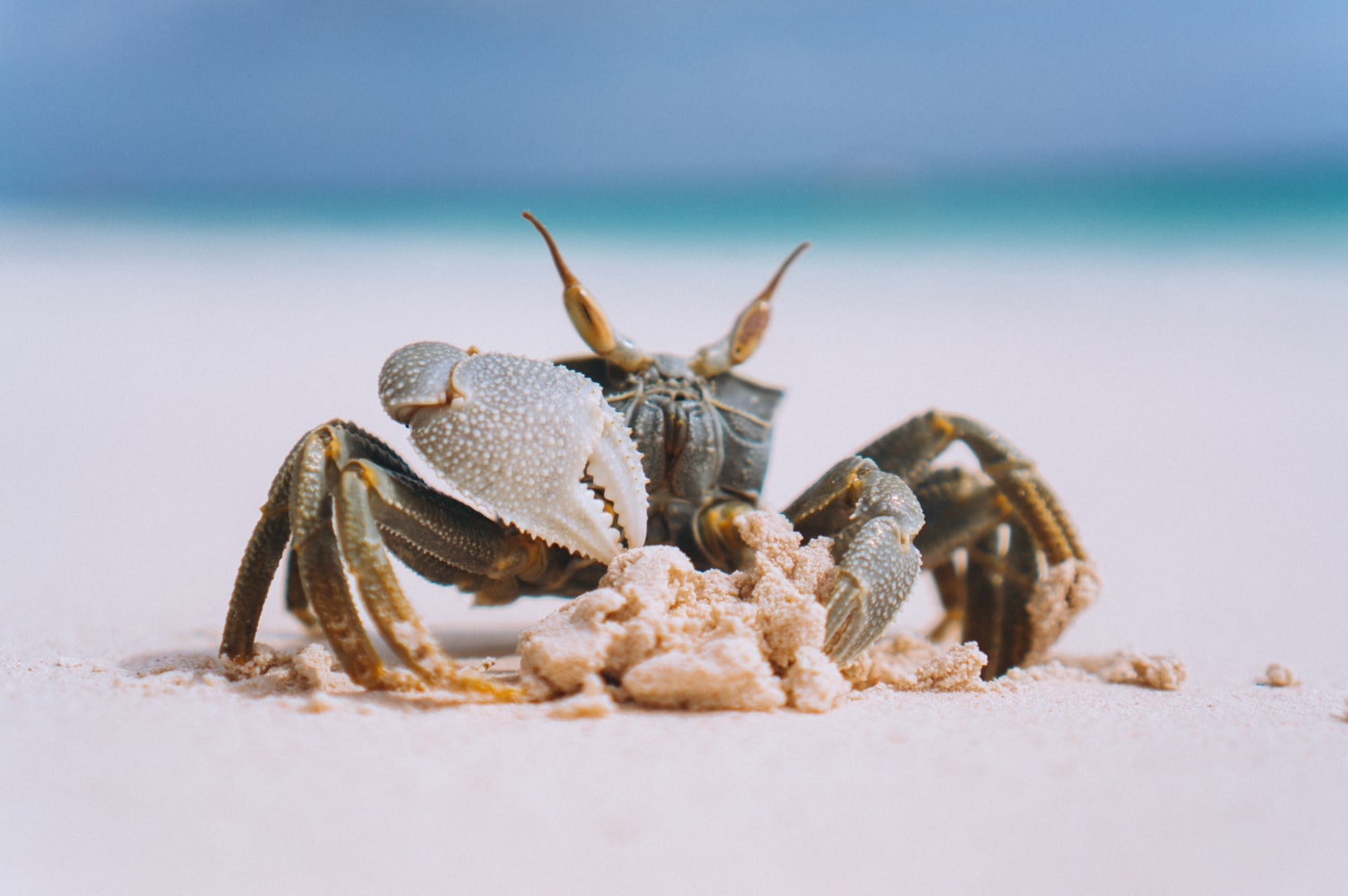Crabs are some of the most fascinating creatures living in seas, oceans, and even on land. They attract attention not only with their unusual appearance but also with their movement, behavior, and remarkable adaptability. Some species live at extreme depths, while others are known for their mass migrations that amaze scientists and tourists alike. If you think of crabs as simple marine animals, these intriguing facts will change your perspective. Discover surprising and educational facts about crabs that you might not know.
- There are over 6,800 species of crabs found in oceans, seas, shorelines, and tropical forests. Some of them live at depths of more than 5,000 meters, where there is complete darkness and extremely high pressure. This demonstrates their incredible ability to adapt to diverse environments.
- Crabs belong to the arthropod group and have an external skeleton made of chitin and calcium. Since this shell does not grow, crabs must periodically shed it and form a new one. This molting process is vital but also a vulnerable stage in a crab’s life.
- Most crabs have ten legs, with the front pair evolved into pincers. These pincers are used for defense, hunting, digging, and communication. In some species, the pincers vary significantly in size.
- Crabs usually walk sideways due to the specific structure of their legs. This movement helps them quickly escape predators and navigate tight spaces. Some species can also walk forward and backward, though this is less common.
- Crabs have complex eyes that can rotate nearly 360 degrees. This allows them to see their surroundings without turning their bodies. Many species have excellent vision, and some can even detect polarized light.
- Red crabs on Christmas Island in Australia are famous for their massive migration. Each year, millions of them move from the forest to the ocean to breed, creating a spectacular natural event. Roads are often closed during this time to protect the migrating crabs.
- Some crabs, such as hermit crabs, do not have their own hard shell and use empty shells of other animals for protection. They sometimes fight over the best shells and even form queues to exchange them based on size. This behavior shows their intelligence and social coordination.
- Crabs can breathe in both water and air depending on the species. Marine crabs use gills that function in moist environments, while land crabs have special chambers that allow them to absorb oxygen from the air. This makes them highly versatile animals.
- In some species, male crabs have one enlarged pincer used to attract females. They wave it rhythmically in the air to gain attention. This behavior is especially common in mangrove crabs.
- Crabs can regenerate lost limbs. If they lose a pincer or a leg in a fight, a new one will grow back after several molting cycles. This process requires time and energy.
- Crabs have diverse diets and can be predators, scavengers, or herbivores. Many species clean the sea floor by feeding on dead organisms and organic debris. Others prey on mollusks, fish, other crustaceans, or even bird chicks.
- In some crab species, the pincers are asymmetrical, with one significantly larger than the other. This allows them to use each claw for a specific purpose such as grabbing or crushing food. It is an example of efficient division of labor.
- Scientists have discovered some deep-sea crabs that glow in the dark through bioluminescence. Their glow helps them communicate or scare away predators. This ability is crucial for survival in pitch-black underwater environments.
- Crabs use a complex communication system involving gestures, vibrations, tapping, and sounds. They signal danger, aggression, or readiness to mate using their pincers and body language. This silent communication works well underwater.
- The lifespan of crabs depends on the species, size, and habitat. Smaller species live for only a few years, while larger ones can live up to 30 years. In captivity, they can live even longer with proper care.
- The Japanese spider crab is the largest in the world by leg span. It can reach over three meters from claw to claw. Despite its fearsome appearance, it is generally peaceful and non-aggressive.
- Many crabs use their coloration for camouflage. They can change color or cover themselves with algae, shells, or coral fragments. This helps them hide from predators and sneak up on prey.
- A crab’s stomach contains tooth-like structures called gastric mills. These internal teeth grind up food for digestion. This allows them to process even hard materials that cannot be broken down externally.
- In many cultures, crabs symbolize protection, the cycle of life, and resilience. In astrology, the crab represents the sign of Cancer, associated with sensitivity and intuition. Crabs also play important roles in cuisine and folklore around the world.
- Crabs are highly sensitive to environmental changes, especially water pollution and rising temperatures. Climate change can affect their migration, reproduction, and survival. Studying crab populations is useful for monitoring the health of marine ecosystems.
Crabs are incredibly adaptable, intelligent, and ecologically important animals. These fascinating facts reveal the complexity of their lives and their role in maintaining the balance of nature. Far from being simple creatures, crabs demonstrate remarkable survival strategies and behavior. We hope this collection of interesting facts has inspired you to appreciate crabs in a new and deeper way.





